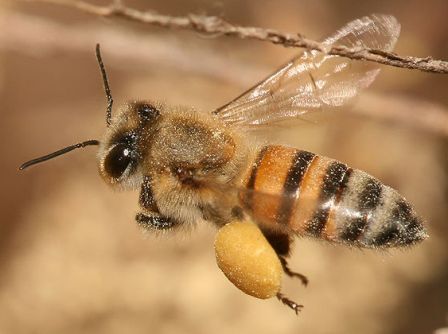- Series:Animals, Transcript English
Genesis 1:25
“And God made the beast of the earth after his kind, and cattle after their kind, and every thing that creepeth upon the earth after his kind: and God saw that it was good.”
We all like to live at a comfortable temperature. Excavations from the most ancient human sites show that homes and entire cities were often positioned to catch the prevailing winds in the summer or to avoid cold blasts in the winter.
 In a similar way, honey bees like to keep their hives at a constant 95 degrees F, and their way of doing it is quite ingenious. When the weather is cold, bees collect at the center of the hive where they generate extra heat by increasing their metabolism through rapid breathing. Other bees position themselves around the sides of the hive to serve as insulation. If it remains cool outside, the bees at the warm center of the hive rotate with the bees at the cooler walls of the hive. If the weather gets too warm, some of the bees act as fans, circulating outside air into the hive. If this does not provide enough cooling, other bees leave the hive to bring water back that will be spread on the hive walls by other bees. Now the fanning of the other bees will actually cause the walls of the hive to cool by evaporation of the water.
In a similar way, honey bees like to keep their hives at a constant 95 degrees F, and their way of doing it is quite ingenious. When the weather is cold, bees collect at the center of the hive where they generate extra heat by increasing their metabolism through rapid breathing. Other bees position themselves around the sides of the hive to serve as insulation. If it remains cool outside, the bees at the warm center of the hive rotate with the bees at the cooler walls of the hive. If the weather gets too warm, some of the bees act as fans, circulating outside air into the hive. If this does not provide enough cooling, other bees leave the hive to bring water back that will be spread on the hive walls by other bees. Now the fanning of the other bees will actually cause the walls of the hive to cool by evaporation of the water.
The intelligence we see at every level of the creation offers strong evidence against the claim that intelligence is a product of evolution. Intelligence is a gift of the Creator to His creatures!
Prayer:
Lord Jesus Christ, I thank You that You have made me with the intelligence to appreciate at least some of what You have made in the creation. Help me to make better use of my intelligence to Your glory. Amen.
Notes:
Joanne E. DeJonge. Bats and Bugs and Snakes and Slugs. Baker Book House, pp. 61-63. Photo: Honey bee carries nectar back to the hive, with pollen attached. Courtesy of Muhammad Mahdi Karim. Licensed under the GNU Free Documentation License, Version 1.2.
